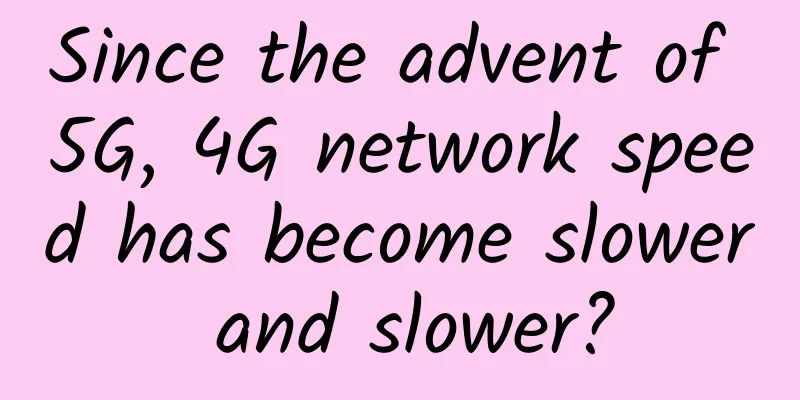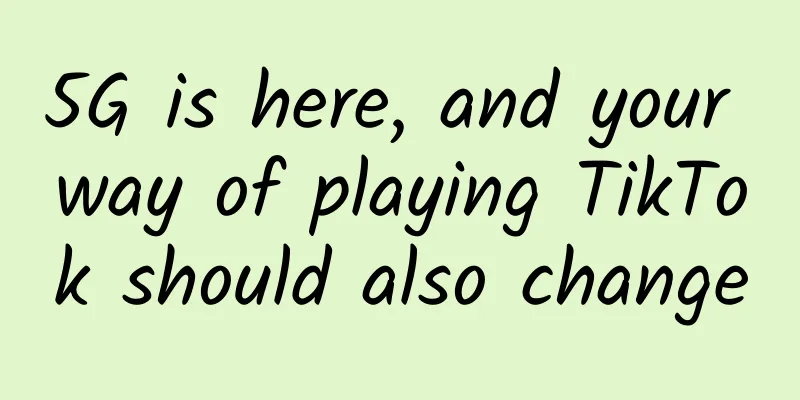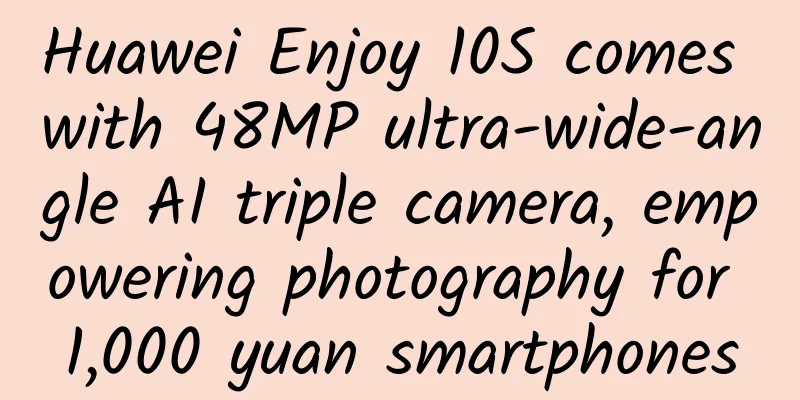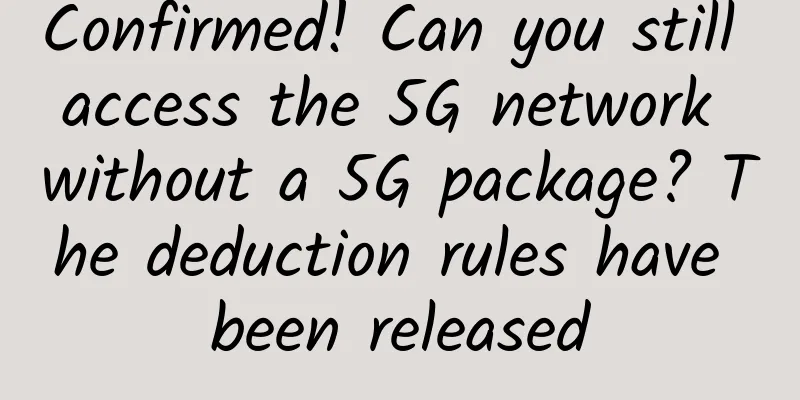Since the advent of 5G, 4G network speed has become slower and slower?

|
With the arrival of 5G, many people have intuitively felt that the speed of 4G is getting slower and slower, so they wonder: Will operators deliberately reduce the speed of 4G in order to promote 5G?
Let me give you the answer first: Operators will not deliberately reduce speeds, but the deployment of 5G may indeed affect 4G network speeds. 1. Are operators willing to limit speed? First, let’s see whether the operators have the subjective intention to limit the speed of 4G. Currently, the number of 4G users has reached its peak, and the vast majority of traffic is carried on 4G, which currently accounts for 86% of the total network data services, making it a clear leader. The reason why users feel that the speed of 4G is getting slower and slower is mainly because there are a large number of 4G users, and the video services that occupy more bandwidth among data services have increased rapidly, resulting in network congestion. 5G is just getting started and is in the stage of spending money to build the network. Although the sun at 8 or 9 in the morning represents the future, there are still very few 5G users at this stage, and it is still far from making money. The promotion of 5G is still mainly based on branding. Therefore, it is very uneconomical to limit the speed of 4G in order to promote 5G. Unless the operators are desperate and want to lose money, no one is willing to do this. 2. How will 5G construction affect 4G speed? So how will the construction of 5G affect the speed of 4G? It all starts with the wireless spectrum. The essence of Internet speed is the use of spectrum resources. As long as the available spectrum does not decrease, the Internet speed will not decrease. So the question becomes: Will 5G take up 4G spectrum? Take China Mobile as an example. It originally had 60M bandwidth at 2.6GHz and deployed three 4G carriers. Later, it obtained 160M spectrum in this frequency band, of which 100M was used for 5G. However, since there are not many 5G users now, it is a waste to occupy so much bandwidth, so 40M is shared with 4G. As a result, China Mobile's actual available bandwidth for 4G on the 2.6GHz band has reached an astonishing 100M! China Mobile's 4/5G dynamic spectrum sharing at 2.6GHz (Image from Network Optimization Mercenary) At the same time, since China Mobile's main 5G spectrum is 2.6GHz, the frequency is relatively low, and the pressure to achieve continuous coverage is small, it will not use a section of 4G low frequency to provide 5G supplementary coverage. Therefore, other 4G spectrums besides 2.6GHz will not be reduced. Currently, the 5G network architecture started by the three major operators is NSA (non-standalone networking). This architecture will use one or more 4G carriers as 5G anchor points to carry 5G signaling, and 5G users will also have priority access to the anchor points. In this way, part of the resources on the 4G carrier serving as the anchor point will be occupied by 5G, which will reduce the 4G rate of the carrier. Currently, China Mobile's anchor point is 1800MHz or 1900MHz. Although there are some sacrifices in 4G on these two frequency bands, it is supplemented by two 4G carriers on 2.6GHz. Overall, the available resources for 4G are still increased. In summary, as the available 4G spectrum increases, China Mobile's 4G speed will not decrease, but may even increase. The situation of China Telecom and China Unicom is different because their mainstream 5G frequency band is 3.5GHz, which is dedicated to 5G. Even if the network is completely unloaded, it cannot be shared with 4G. In addition, the frequency of 3.5GHz is relatively high, and the uplink coverage is limited, making it difficult to achieve continuous coverage. Therefore, it is necessary to take a section of the original 4G frequency band to enhance coverage, resulting in a reduction in the available spectrum bandwidth of 4G. In actual operation, China Telecom and China Unicom currently use 4G carriers at 1800MHz and 2100MHz as anchor points. In the future, dynamic spectrum sharing between 4G and 5G will be deployed at 2100MHz to enhance 5G coverage. It can be seen from this that for China Telecom and China Unicom, the deployment of 5G will occupy existing 4G resources, so it is not surprising that the speed of 4G network will be reduced. 3. What's the rumor about 4G speed limit? Finally, let’s take a look at the rumors that a certain operator limited the 4G speed when 5G was first launched last year. Rumors of 5G speed limit in August last year In fact, the rate limit here is called AMBR (Aggregate Maximum Bit Rate), also known as the contracted rate, which is the maximum rate that can be reached by all applications on the user's mobile phone combined. According to online rumors, a certain operator reduced the 4G contract speed from the original 300Mbps to 100Mbps. As a result, the peak speed of 4G that mobile phones could theoretically reach can now only reach one-third of it. But the theoretical speed is achieved when all the resources of the entire cell are used by one person without any interference. In fact, in daily use, ordinary 4G users can reach a speed of tens of megabits, which is already very fast. They can't even reach 100Mbps, let alone the theoretical peak of 300Mbps. The main purpose of operators doing this is not to limit the speed, but to create a gradient between 4G packages and 5G packages, highlight the nobility of 5G packages, and guide users with 5G mobile phones to switch to 5G packages. After all, 5G phones use 4G packages: the maximum speed is only 100Mbps; after changing to a 5G package, the low-end is 300Mbps, the mid-range is 500Mbps, and the high-end, in theory, can enjoy an ultra-high speed of 1000Mbps! So, will you change? Well, that’s all for this issue. I hope it will be helpful to you. |
<<: What kind of network slicing does 5G require?
>>: With the support of "new infrastructure", 5G helps industrial Internet enter the fast lane
Recommend
5G spreads the new coronavirus? Foreigners took it for granted and many 5G base stations were burned down
According to foreign media reports, recent conspi...
What is RedCap technology in 5G R17?
A few days ago, 3GPP announced the freezing of th...
Inventory: Major network communication events in the first half of 2020
In the blink of an eye, half of 2020 has passed. ...
Privileged Access Management: The Future of Cyber Resilience
Attacks against critical infrastructure and gover...
Metaverse: What are the four pillars?
As a new paradigm of industrial Internet, the Met...
How to configure PoE switch settings with NVR?
All modern video networks use IP cameras. IP came...
Headline: Determine whether it is an IP address
This question has a tricky part. It asks you to d...
ColoCrossing: $12/year-1GB/20G SSD/1Gbps unlimited traffic/New York data center
ColoCrossing has released a new VPS promotional p...
Transition to 5G drives demand for fiber
A new report released by IndexBox: "World – ...
TCP protocol status analysis, super complete~
Today I will talk to you about the state analysis...
What exactly is the performance problem with TCP?
Overview The performance issue of TCP is essentia...
HostYun: Los Angeles Cera high-security VPS starting at 19.8 yuan per month, 10G bandwidth, optional native IP
We have shared product information of many data c...
The best solution is to merge telecom operators into two companies, and the next five years will be the best period
In recent years, the competition in the communica...
Huawei Consumer Business Group focuses on user experience and builds high-quality cloud services for the world
[Shenzhen, China] On April 12, 2017, the 14th Hua...
CN2 restocking: $46.7/year - dual core, 1G memory, 20G hard disk, 1TB monthly traffic, KVM, multiple computer rooms
It's been a long time since I shared informat...









